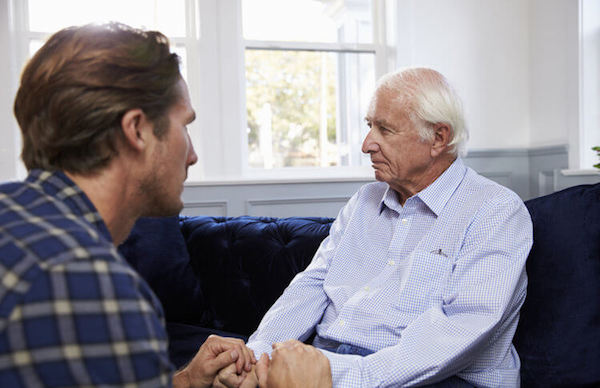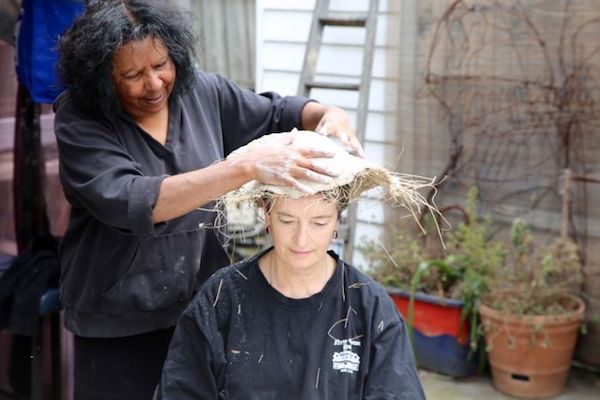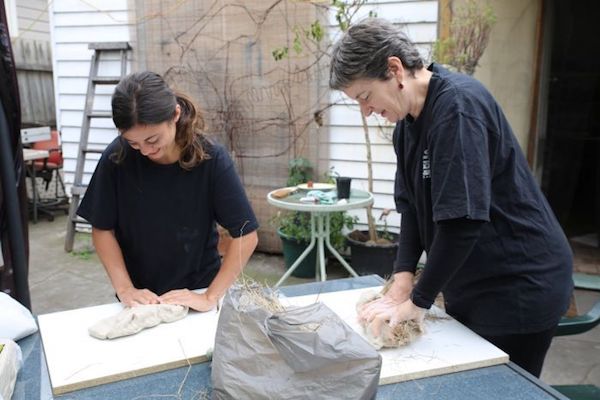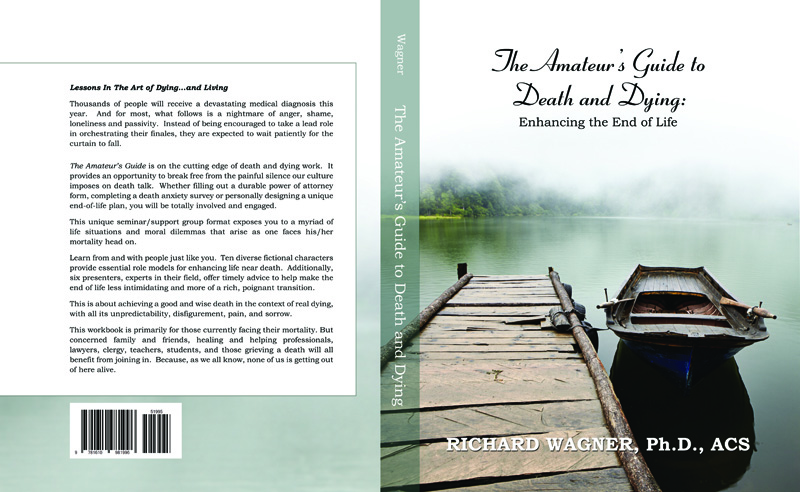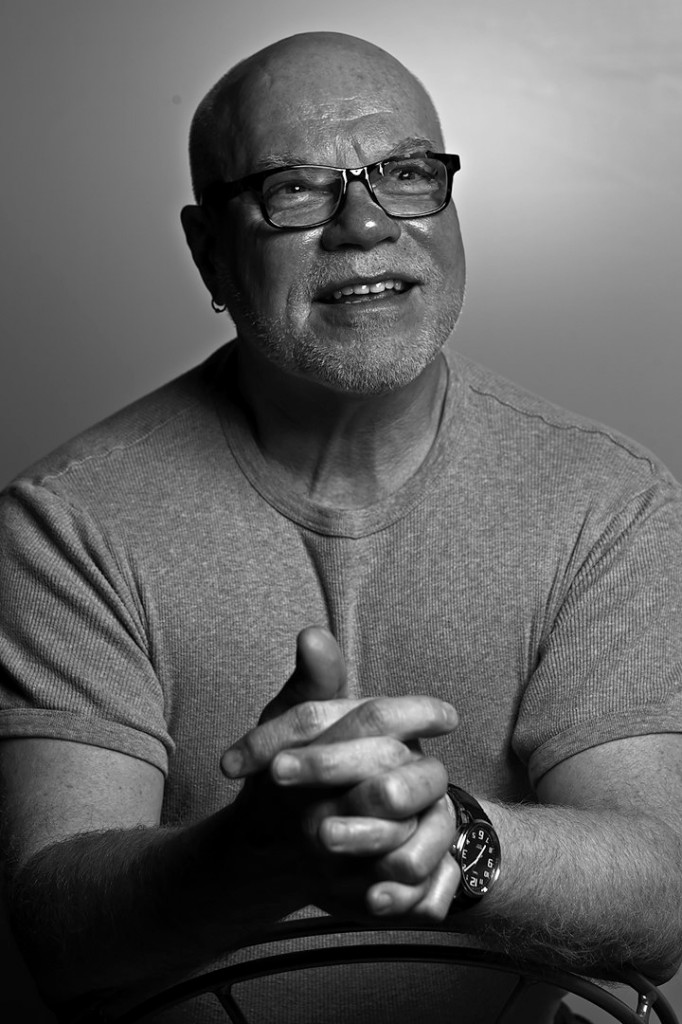What to do when the person you are grieving is here but not here
[T]he longer we live and the more we experience, the more we find ourselves in the cracks between joy and contentment on one side of life’s continuum and grief and loss on the other. Children leave our nests, we move from vocations to avocations — from retirement to, as a dear friend puts it, “re-aspirement.” Addresses, relationships, bodies, even spouses, can change. More loved ones get more serious diagnoses. Sometimes we get dreaded medical test results ourselves.
When someone dies, the loss seems clear. But what about those times when grief is anticipatory — when the diagnosis is terminal and we grieve the inevitable? Or times when the loss is ambiguous? Perhaps a parent shows signs of dementia, a son or daughter in the military is missing in action or returns from combat with PTSD (post-traumatic stress disorder) or a dear friend has a serious stroke. Maybe a loved one is in the throes of addiction. What was has changed, replaced by uncertainty.
When You Are Caught in ‘Frozen Grief’
University of Minnesota emeritus professor and family therapist Pauline Boss, author of Ambiguous Loss, calls this state of complicated loss “frozen grief.” A loved one might be physically present but psychologically absent, as in the case of Alzheimer’s or other mental disorders. Or he or she might be psychologically present (to us) but physically absent, as in the case of a child gone missing or a tragedy like 9/11 where many bodies were never recovered. More common situations like divorce, adoption or estrangement can also cause confusing feelings of ambiguous loss.
We are a society that doesn’t do well with ambiguity. We want clarity. We want steps to acceptance. We want closure — a concept that makes me want to tear my graying hair out! Grief is a messy process, and ambiguous loss even messier.
“My point is very different, that ambiguous loss is a complicated loss, which causes, therefore, complicated grief, but it is not pathological. . . it’s a pathological situation,” said Boss in a 2016 interview with Krista Tippett, host of Public Radio Exchange’s On Being.
Boss, and those in the therapeutic community who have embraced her ideas, give us permission to ride the waves of this type of loss without feeling pressured to “just move on,” as so many expect us to do. Instead of feeling alone in a state of “bewilderness,” we learn that the pangs of grief we have when someone is here — but not here — are normal.
Her Mom’s Wish
As I wrote in my recent book, Take Good Care: Finding Your Joy in Compassionate Caregiving, a woman in my caregivers’ group beautifully described how it feels to ride this sea of rolling emotions:
Mom was in a memory care facility but still willing and able to have us take her out for special occasions. After one Easter family dinner at my house, Mom thanked me for the nice meal, commented on our nice family, then said, “Do you know what I wish?” “What, Mom?” my sister and brother and I all asked. “At times like this, I really wish I had children.”
We are still able to laugh about that memory; sometimes with Alzheimer’s, that’s all you can do. Then you go off to another corner of grief and look for the cracks of light — she still responds to hands that hold and hugs that enfold. She still likes to sit outside and look at the flowers. So here we are. But we are so ready.
A friend of mine compared ambiguous loss to water. Water can run through your fingers, but it can also become ice, still and solid.
“Water, not water, yet water,” she said. Her words helped me deal with the flood of emotions that overwhelmed me when my father was diagnosed with terminal cancer. “Dad, not dad, yet dad,” became my mantra before and after his death.
Your Unique Grief
As these anecdotes demonstrate, loss is as varied as the people who experience it, and we deal with it differently.
“The only expert on grief is the person experiencing a particular loss at a particular time. You,” writes Tom Ellis, a licensed marriage and family therapist and author of This Thing Called Grief. “Grief is so personally unique and changing that getting your mind and heart around it once and for all is impossible. Just when you reach a place of understanding, it changes again…. Despite this dilemma, there is value in gathering as much information as possible, in pulling together some tools to help.”
Tips for Coping
Here are some suggestions for people supporting someone, or those in the midst of their own ambiguous loss:
- Don’t pressure yourself or others to “just move on.” As a therapist friend once told me, there is no closure for this type of grief — you just learn to carry it differently.
- Be tender with yourself and try to take comfort in the knowledge that your feelings are normal. However, get the help of a qualified professional if your feelings overwhelm you to the degree they affect your ability to function or if you seek to escape them through addictive or harmful behaviors.
- Seek support from family and friends who love, affirm and listen to you with open mind and ears and non-judgmental hearts.
- Set and maintain appropriate and respectful boundaries. Although well intentioned, some caregivers tend to swoop in with answers or directives, when the best they can do is be with you in your ambiguity. As Ellis points out, “Loss is the problem, not you.”
- Loss and grief can take their toll, so self-care is extremely important. Exercise, meditation, nature, journaling, play and laughter can all help. We each have different balance points and tipping points, but we can usually sense when things are out of balance.
- Ask for, and accept, help when needed and offered. Let friends garden or clean for or with you. Let them take you to dinner or watch your children. So many caregivers have told me what a gift it is to do something to lift the burden or spirits of someone in need.
- Make room for grief and loss, but try to take time each day to notice the beauty that surrounds us.
Each of our stories is unique, so the way in which we process loss will differ. But it is important to remember that we do not travel alone.
Complete Article HERE!

